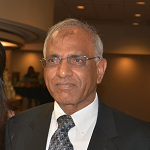Analytical and Numerical Methods for Linear and Nonlinear Analysis of Structures at Macro, Micro and Nano Scale
A special issue of Mathematics (ISSN 2227-7390). This special issue belongs to the section "Engineering Mathematics".
Deadline for manuscript submissions: closed (30 April 2022) | Viewed by 17294
Special Issue Editors
Interests: applied mathematics; linear and non-linear mechanics of composite structures at macro, micro, and nano scale; non-local continuum mechanics; smart materials and structures; composite materials
Special Issues, Collections and Topics in MDPI journals
Interests: computational solid mechanics; finite element method; plates and shell theories; non-local mechanics; composite materials; smart materials
Interests: linear and nonlinear finite element analysis; variational methods; plate and shell theories; composite structures; numerical heat transfer; computational fluid dynamics; non-local theories; applied mathematics
Special Issue Information
Dear Colleagues,
The mathematical models of physical phenomena are based on the fundamental scientific laws of physics. Mathematical models consist of a combination of algebraic and differential (sometimes even integral) equations. Mathematical models of structural elements (e.g., beams, plates, and shells) based on continuum assumption require a proper treatment of the kinematic, kinetic, and constitutive issues accounting for possible sources of non-local and non-classical continuum mechanics concepts and solving associated boundary value problems. The development of mathematical models and their solutions by analytical and numerical methods have been the focus of many researchers. In particular, the mechanical response of ultrasmall structures has received a great deal of attention because of their wide applications in high-tech devices, such as nanoelectromechanical and microelectromechanical systems.
This special issue is aimed at collecting high-quality papers on the latest developments, techniques, and approaches for the modeling and simulation of the mechanical behavior of structures at macro, micro and nano scales. Advanced accurate numerical and analytical methods to solve PDEs are of high interest. The vibrational response, buckling instability, wave propagation analysis, and static deformation of macro, micro and nano scales’ structural components are covered in this special issue.
Dr. Krzysztof Kamil ŻurDr. Jinseok Kim
Prof. Dr. J. N. Reddy
Guest Editors
Manuscript Submission Information
Manuscripts should be submitted online at www.mdpi.com by registering and logging in to this website. Once you are registered, click here to go to the submission form. Manuscripts can be submitted until the deadline. All submissions that pass pre-check are peer-reviewed. Accepted papers will be published continuously in the journal (as soon as accepted) and will be listed together on the special issue website. Research articles, review articles as well as short communications are invited. For planned papers, a title and short abstract (about 100 words) can be sent to the Editorial Office for announcement on this website.
Submitted manuscripts should not have been published previously, nor be under consideration for publication elsewhere (except conference proceedings papers). All manuscripts are thoroughly refereed through a single-blind peer-review process. A guide for authors and other relevant information for submission of manuscripts is available on the Instructions for Authors page. Mathematics is an international peer-reviewed open access semimonthly journal published by MDPI.
Please visit the Instructions for Authors page before submitting a manuscript. The Article Processing Charge (APC) for publication in this open access journal is 2600 CHF (Swiss Francs). Submitted papers should be well formatted and use good English. Authors may use MDPI's English editing service prior to publication or during author revisions.
Keywords
- linear and nonlinear boundary/initial value problems
- continuum mechanics
- elasticity theories
- micro/nanostructured systems
- macroscale structures
- mechanical response
- discretization methods
- numerical analysis
- analytical methods
- multifield loads
- partial differential equations
- verification and validation
- fast numerical algorithms







